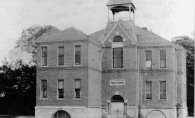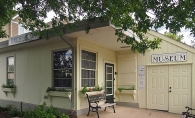The Mission statement of the Marjorie McNeely Conservatory is simple and profound: “To inspire our public to value the presence of living things in our lives.” This month, the McNeely Conservatory is celebrating 100 years of inspiration, beauty and delight, and getting ready for the holiday flower show, which opens on December 5 and runs through January 3. The holiday flower show is a sensational display with hundreds of poinsettias and is deeply tied to the history of the conservatory.
The Como Park Conservatory opened in November 1915 at a moment in American history when the City Beautiful movement was inspiring civic improvements and building projects that would offer places for city dwellers to experience the uplifting influence of art and nature. Proponents of the City Beautiful movement were advocating for public parks and grand building projects in the belief that civic loyalty and community pride would create better citizens.
The imposing glass palace in Como Park is the perfect expression of the City Beautiful philosophy. The palace opened to great fanfare and was soon hosting flower shows, cocktail parties and weddings. For decades, Twin Cities residents have found an escape from long, snowy winters among the banana plants and orchids. The conservatory further enhanced city life by supplying flowers and plants for public parks in Saint Paul.
But there were some bumps and bruises along the way. For example, a hailstorm in 1962 left the conservatory with broken glass. The replacement plexiglass clouded up within a few years, and plants began to die from lack of sunlight. Without regular maintenance, plumbing and electrical systems failed. The city struggled to maintain the old structure, as the need for repair and updating got ahead of the funds and staff.
In 1974, the building was placed on the National Register of Historic Places, giving it protected status, but keeping it in good repair was still a constant battle, with emergency funding, community appeals, last-minute interventions, and decades of one crisis after another. From 1987 to 1992, major renovations were done to save the building from collapse, but the “jewel of Como” was fragile and her future was often uncertain.
What the grand old lady needed was a champion, an angel who could create financial stability and allow the management and staff to look past the next crisis and think about growth and long-term goals.
Marjorie McNeely loved the conservatory. She took her children there when they were young to share her passion for flowers and gardens with them. After her death in 1998 her family wanted to do something to honor her memory. They knew there would be no more fitting tribute to their mother than a memorial contribution to the Como Park Conservatory.
The McNeely family’s generous gift in 2002 not only allowed for improvements, it also spurred further giving by generating renewed interest. And now, the Friends of the Marjorie McNeely Conservatory is looking toward the future with enthusiasm and excitement.
McNeely Conservatory horticulture manager Tina Dombrowski says that the “wow factor” has always been an important guiding principle for the managers of the conservatory. Architect and founding manager Frederick Nussbaumer designed the building based on the grand Victorian glass house at Kew Gardens in England. He wanted a visit to his conservatory to be a memorable event.
“He always said, ‘Everyone loves flowers,’” Dombrowski says. Nussbaumer believed the conservatory and Como Park should fulfill the public’s ideal of beauty and spectacle.
Dombrowski says she can only imagine what the next century might bring. There will be a new formal garden outside, there may be new technologies to help visitors learn more about what they are seeing, and more flower shows and special events. The Marjorie McNeely Conservatory will continue to inspire us all to value the presence of living things in our lives.









